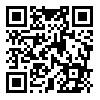Sun, Apr 6, 2025
[Archive]
Volume 19, Issue 5 (Suppl- 2021)
IJRM 2021, 19(5): 333-333 |
Back to browse issues page
Download citation:
BibTeX | RIS | EndNote | Medlars | ProCite | Reference Manager | RefWorks
Send citation to:



BibTeX | RIS | EndNote | Medlars | ProCite | Reference Manager | RefWorks
Send citation to:
Jahanara M, Montazeri F, Moshrefi M, Sharifiyazdi H, Kalantar SM. P-166 Non-invasive preimplantation genetic testing advantages and disadvantages. IJRM 2021; 19 (5) :333-333
URL: http://ijrm.ir/article-1-3012-en.html
URL: http://ijrm.ir/article-1-3012-en.html
1- Department of Biotechnology, School of Veterinary Medicine, Shiraz University, Fars, Iran.
2- Abortion Research Center, Yazd Reproductive Sciences Institute, Shahid Sadoughi University of Medical Sciences, Yazd, Iran. ,marjan.montazeri@gmail.com
3- Medical Nanotechnology and Tissue Engineering Research Center, Yazd Reproductive Sciences Institute, Shahid Sadoughi University of Medical Sciences, Yazd, Iran. Research and Clinical Center for Infertility, Yazd Reproductive Sciences Institute, Yazd, Iran.
4- Department of Clinical Science, School of Veterinary Medicine, Shiraz University, Fars, Iran.
5- Abortion Research Center, Yazd Reproductive Sciences Institute, Shahid Sadoughi University of Medical Sciences, Yazd, Iran.
2- Abortion Research Center, Yazd Reproductive Sciences Institute, Shahid Sadoughi University of Medical Sciences, Yazd, Iran. ,
3- Medical Nanotechnology and Tissue Engineering Research Center, Yazd Reproductive Sciences Institute, Shahid Sadoughi University of Medical Sciences, Yazd, Iran. Research and Clinical Center for Infertility, Yazd Reproductive Sciences Institute, Yazd, Iran.
4- Department of Clinical Science, School of Veterinary Medicine, Shiraz University, Fars, Iran.
5- Abortion Research Center, Yazd Reproductive Sciences Institute, Shahid Sadoughi University of Medical Sciences, Yazd, Iran.
Abstract: (262 Views)
Background: It is essential to identify quality and healthy embryos for transfer in in vitro fertilisation successful. Research has shown that traditional morphological methods are not sufficient for diagnosis. The best embryo can select the best embryo with preimplantation genetic testing. With PNG be tested the severe inherited conditions or for chromosome abnormalities. It needs to biopsy from the embryo for genetic testing, includes separating one or more cells from the embryo, or collecting blastocoel fluid and embryo culture medium. Because of the risks of cell biopsy from embryos, it is necessary to find non-invasive methods for PNG. The research has shown, we can use genomic DNA in blastocoel fluid and embryo culture medium. It may be open a new way for selecting the best embryo.
Objective: This review tries to evaluate the results of research about non-invasive pre-implantation genetic testing. The most popular method is detecting and analyzing cell-free DNA in embryo culture medium for genetic testing. Of course, there is a long way to go to use this method for PNG. This article tries to examine its technical and biological problems.
Materials and Methods: Original research and review papers about non-invasive pre-implantation genetic testing were sourced by searching PubMed and Google Scholar databases until February 2021. The search included keywords: ‘spent culture media’; ‘cell-free DNA’; ‘non-invasive pre-implantation genetic testing’; ‘blastocentesis’; ‘blastocoel fluid’ and ‘pre-implantation genetic screening’.
Results: Available data suggested that blastocoel fluid and embryo spent culture medium, samples provide DNA suitable for genetic analysis and are a potential tool for preimplantation genetic testing. Embryonic DNA could be detected in the embryo spent culture media and blastocoel fluid. Primery studies have been successful in molecularly examining cell-free DNA, but the amount and quality of available DNA has varied. Reports of similarity in the results of free DNA genetic testing and embryo biopsy have been reported differently.
Conclusion: The reports have shown that results of trophectoderm biopsies may be different in cytogenetic data. It is likely for embryonic mosaicism or DNA contamination. It was said that aneuploid embryonic cells are removed from the embryo. Therefore, DNA distributes in the spent culture medium and blastocoel fluid. Of course, this point needs to check out more. The hard part is isolating and amplifying DNA to make an accurate clinical diagnosis. Some factors are distorting, and there are contaminants in this work, but generally, it is important and necessary that we have a non-invasive pre-implantation genetic testing.
Objective: This review tries to evaluate the results of research about non-invasive pre-implantation genetic testing. The most popular method is detecting and analyzing cell-free DNA in embryo culture medium for genetic testing. Of course, there is a long way to go to use this method for PNG. This article tries to examine its technical and biological problems.
Materials and Methods: Original research and review papers about non-invasive pre-implantation genetic testing were sourced by searching PubMed and Google Scholar databases until February 2021. The search included keywords: ‘spent culture media’; ‘cell-free DNA’; ‘non-invasive pre-implantation genetic testing’; ‘blastocentesis’; ‘blastocoel fluid’ and ‘pre-implantation genetic screening’.
Results: Available data suggested that blastocoel fluid and embryo spent culture medium, samples provide DNA suitable for genetic analysis and are a potential tool for preimplantation genetic testing. Embryonic DNA could be detected in the embryo spent culture media and blastocoel fluid. Primery studies have been successful in molecularly examining cell-free DNA, but the amount and quality of available DNA has varied. Reports of similarity in the results of free DNA genetic testing and embryo biopsy have been reported differently.
Conclusion: The reports have shown that results of trophectoderm biopsies may be different in cytogenetic data. It is likely for embryonic mosaicism or DNA contamination. It was said that aneuploid embryonic cells are removed from the embryo. Therefore, DNA distributes in the spent culture medium and blastocoel fluid. Of course, this point needs to check out more. The hard part is isolating and amplifying DNA to make an accurate clinical diagnosis. Some factors are distorting, and there are contaminants in this work, but generally, it is important and necessary that we have a non-invasive pre-implantation genetic testing.
Keywords: Cell free DNA, Embryo, Spent culture medium, Blastocoel fluid, Preimplantation genetic test.
Type of Study: Congress Abstract |
Subject:
Fertility & Infertility
Send email to the article author
| Rights and permissions | |
 |
This work is licensed under a Creative Commons Attribution-NonCommercial 4.0 International License. |




